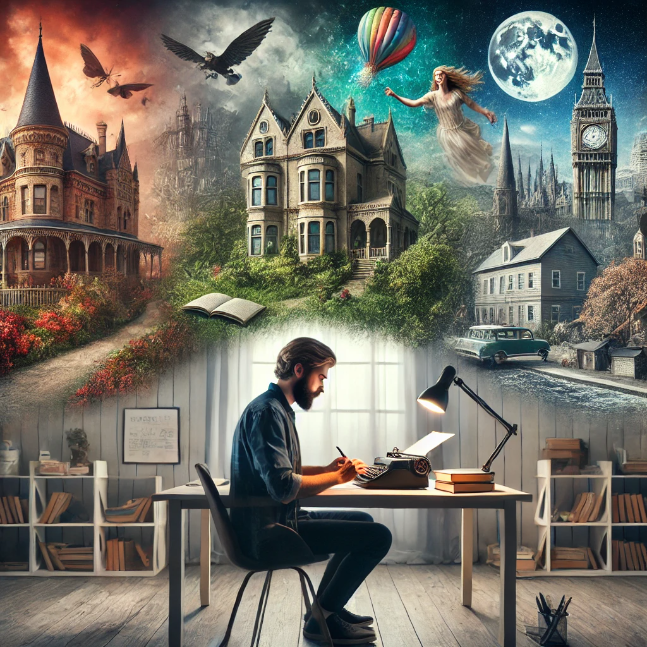The Importance of Setting in Storytelling

Setting is a crucial element of storytelling that provides the backdrop against which the plot unfolds and the characters interact. It can significantly influence the mood, tone, and direction of the narrative. A well-crafted setting can immerse readers in the story, making it more engaging and memorable. In this article, we’ll explore the importance of setting in storytelling and how to effectively create and use it in your writing.
The Role of Setting in a Story
- Creating Atmosphere and Mood
- Atmosphere: The setting helps establish the atmosphere of a story, whether it's eerie, romantic, tense, or serene. Descriptive language and sensory details can enhance the atmosphere, drawing readers into the world you've created.
- Mood: The setting can evoke specific emotions in readers. For example, a stormy night can create a sense of foreboding, while a sunny beach can evoke relaxation and happiness.
- Influencing Plot and Character
- Plot Development: The setting can directly impact the plot. It can introduce obstacles, influence character decisions, and shape the storyline. For instance, a story set in a dystopian world will have different plot dynamics than one set in a peaceful village.
- Character Behavior: Characters' actions and behaviors are often influenced by their surroundings. A character in a war-torn country will behave differently than one in a tranquil countryside.
- Enhancing Theme and Symbolism
- Thematic Elements: The setting can reinforce the themes of a story. A decaying city can symbolize societal collapse, while a thriving garden can represent renewal and growth.
- Symbolism: Specific elements within the setting can serve as symbols, adding depth and layers of meaning to the narrative. For example, an abandoned house might symbolize lost dreams or secrets.
- Providing Context and Background
- Historical Context: Setting provides the historical and cultural context of a story. It helps readers understand the time period and societal norms that influence the characters and plot.
- World-Building: In genres like fantasy and science fiction, setting is crucial for world-building. It involves creating detailed and believable worlds that enhance the reader's immersion.
Tips for Creating an Effective Setting
- Use Vivid Descriptions
- Sensory Details: Engage all five senses to create a vivid and immersive setting. Describe what characters see, hear, smell, taste, and feel.
- Specificity: Use specific details to make the setting feel real and tangible. Instead of saying “a tree,” describe it as “a gnarled oak with sprawling branches.”
- Integrate Setting with Plot and Character
- Dynamic Interaction: Show how the setting interacts with the characters and plot. For example, a character might struggle against the harsh elements of their environment.
- Character Reflection: Use the setting to reflect characters' inner states. A chaotic environment might mirror a character’s tumultuous emotions.
- Research and Authenticity
- Accuracy: If your story is set in a real place or historical period, ensure your descriptions are accurate and well-researched. Authenticity adds credibility and depth to your narrative.
- Cultural Sensitivity: Be respectful and accurate when depicting cultures and settings that are not your own. Avoid stereotypes and ensure representation is fair and nuanced.
- Balance Description with Action
- Avoid Overloading: While detailed descriptions are important, avoid overwhelming readers with lengthy passages of setting description. Balance it with action and dialogue.
- Show, Don’t Tell: Integrate setting details into the narrative action. Instead of stating that it’s cold, show characters shivering and breath misting in the air.
- Evolve the Setting
- Change Over Time: Allow the setting to change and evolve throughout the story. Seasons might change, buildings might deteriorate, or landscapes might transform due to events in the plot.
- Reflect Plot Progression: Use changes in the setting to reflect the progression of the plot and the development of characters.
Examples of Effective Settings
- Mystery/Thriller
- Gothic Mansion: An old, creaky mansion with dark hallways, hidden passages, and a history of mysterious occurrences creates an atmosphere of suspense and fear.
- Romance
- Coastal Town: A picturesque seaside town with charming cafes, sandy beaches, and vibrant sunsets sets a romantic and serene mood for a love story.
- Fantasy
- Enchanted Forest: A dense forest filled with magical creatures, shimmering light, and ancient trees creates a sense of wonder and adventure.
- Science Fiction
- Dystopian City: A sprawling metropolis with towering skyscrapers, neon lights, and oppressive government surveillance sets a futuristic and tense atmosphere.
Conclusion
Setting is an integral part of storytelling that enhances the narrative by creating atmosphere, influencing plot and character, reinforcing themes, and providing context. By using vivid descriptions, integrating setting with plot and character, ensuring authenticity, balancing description with action, and allowing the setting to evolve, authors can create immersive and compelling worlds that captivate readers. Mastering the art of setting will enrich your storytelling and leave a lasting impression on your audience.
For more tips on storytelling, check out our articles on The Power of Storytelling: Connecting Hearts and Minds and Scriptwriting: The Blueprint of Cinematic Storytelling.



